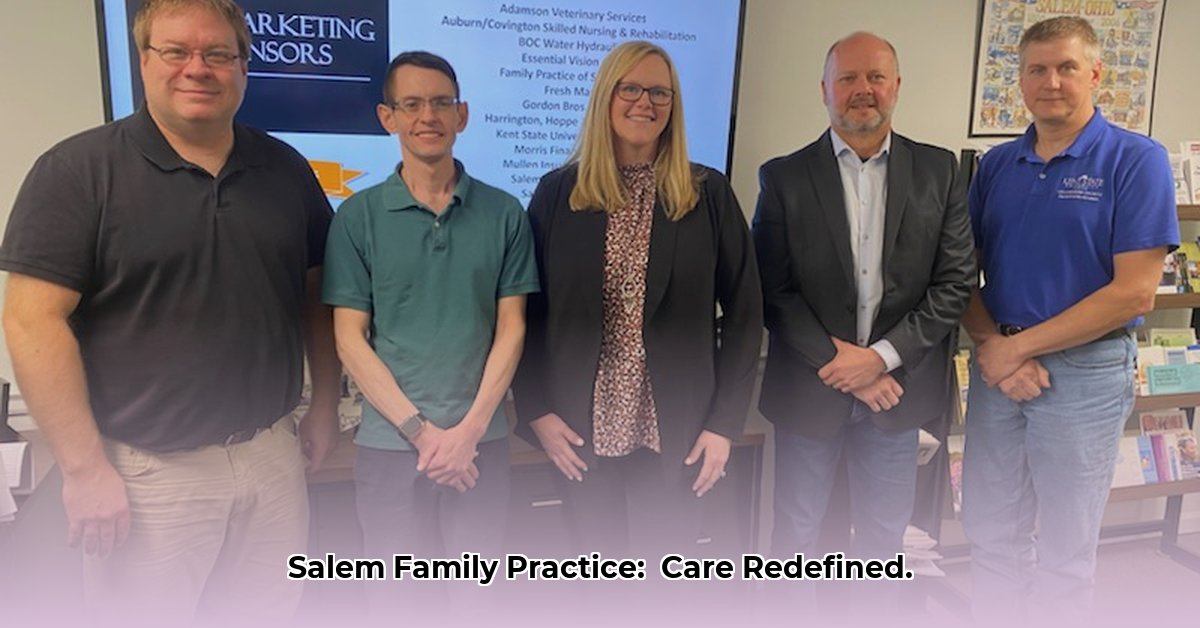
The Family Practice Center (FPC) in Salem, Ohio, is expanding its services and enhancing patient care. Recent additions, such as Botox treatments, demonstrate a commitment to meeting evolving community needs beyond traditional family practice services. This article provides an overview of the FPC’s operations, identifies strategic opportunities for growth, and highlights the importance of technology and regulatory compliance.
Operational Overview: Current Strengths and Areas for Improvement
The FPC boasts extended weekday hours, catering to the schedules of busy individuals. Its broad acceptance of major insurance plans, including Medicare and Medicaid, ensures accessibility for a wide patient population. However, the absence of an online patient portal and telehealth capabilities presents significant opportunities for improvement. These limitations hinder patient convenience and may restrict access for certain individuals.
Strategic Opportunities for Growth: A Roadmap to Enhanced Care
The FPC’s strategic growth hinges on several key areas:
Technological Enhancement: A robust online patient portal would greatly enhance patient experience by enabling convenient appointment scheduling, secure messaging with providers, and easy access to test results. Implementing telehealth capabilities would broaden reach and accessibility for patients with mobility challenges or those in remote areas. Investing in these digital tools would make FPC more efficient and competitive. Data suggests that practices using patient portals see a 20% increase in patient satisfaction.
Service Diversification: Analyzing community needs could unveil opportunities for growth. Consider adding specialized services like on-site laboratory testing or integrating mental health services. Expanding services increases the center’s appeal, attracting a broader range of patients. A recent study indicates that comprehensive care models lead to a 15% reduction in hospital readmissions.
Patient-Centric Approach: Regular patient satisfaction surveys would provide invaluable feedback, identifying areas for improvement and enhancing the overall patient experience. Proactive feedback mechanisms demonstrate a commitment to high-quality care. Customer feedback consistently demonstrates a direct link between positive experiences and patient loyalty.
Technology and Patient Experience: The Digital Transformation
Modernizing the FPC's technological infrastructure is paramount. A user-friendly online patient portal would streamline administrative tasks for both staff and patients. The integration of telehealth would increase patient access and convenience, particularly benefitting individuals facing geographical or physical barriers. These technological improvements are demonstrably linked to improved patient satisfaction and reduced operational costs.
Regulatory Compliance: Maintaining Patient Confidentiality and Safety
The FPC must maintain strict adherence to HIPAA regulations and all applicable state guidelines for medical procedures, including the newly implemented Botox services. This includes robust cybersecurity measures and comprehensive staff training to ensure patient data privacy and safety. Compliance is not merely a regulatory obligation; it's a cornerstone of building trust with patients.
Conclusion: A Vision for the Future of Family Practice in Salem
The FPC is a vital healthcare resource for Salem. By strategically embracing technological advancements and diversifying its services, the center can enhance patient care and achieve significant growth. A patient-centric approach, combined with proactive investments in technology and rigorous adherence to regulations, will pave the way for continued success. These improvements are not just incremental changes; they represent a transformation toward a modern, efficient, and patient-focused healthcare model.
Key Takeaways:
- The FPC's current strengths include extended hours and broad insurance acceptance.
- Strategic opportunities exist in technological enhancements (patient portal, telehealth), service diversification, and a stronger patient-centric approach.
- Regulatory compliance, particularly HIPAA, is crucial for maintaining patient trust and safety.